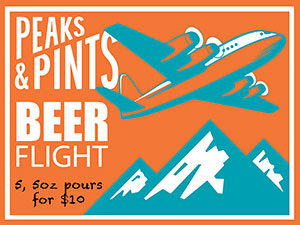 According to the Brewer’s Association, pale ales are the second most popular style of craft beer, trailing only IPAs. Pale ales originated in the UK in the late 1700s after reliable methods existed to produce pale barley malt, and that meant pale-colored beer. At first, the new pale malt was expensive, so the pale beers were limited to wealthier drinkers. But as pale malt became more affordable, pale-colored ales displaced dark ales in popularity, slowly overtaking porter and stout. Bass Brewery of Burton-upon-Trent, England made pale ales famous, thanks to their local hard water suited for the production of pale ale. This alkaline water not only brings an impression of dryness in the finished beer, but also rounds out the hop bitterness, a good quality in a brew with a lot of bitter character. Sierra Nevada “Americanized” the style in 1980 when they released their hoppier version of the pale ale featuring Cascade hops, which became the signature hop for the American version of style. Peaks and Pints pours five pales, including the famous Sierra Nevada Pale Ale, in our Craft Beer Crosscut 6.30.18: A Flight of Pales.
According to the Brewer’s Association, pale ales are the second most popular style of craft beer, trailing only IPAs. Pale ales originated in the UK in the late 1700s after reliable methods existed to produce pale barley malt, and that meant pale-colored beer. At first, the new pale malt was expensive, so the pale beers were limited to wealthier drinkers. But as pale malt became more affordable, pale-colored ales displaced dark ales in popularity, slowly overtaking porter and stout. Bass Brewery of Burton-upon-Trent, England made pale ales famous, thanks to their local hard water suited for the production of pale ale. This alkaline water not only brings an impression of dryness in the finished beer, but also rounds out the hop bitterness, a good quality in a brew with a lot of bitter character. Sierra Nevada “Americanized” the style in 1980 when they released their hoppier version of the pale ale featuring Cascade hops, which became the signature hop for the American version of style. Peaks and Pints pours five pales, including the famous Sierra Nevada Pale Ale, in our Craft Beer Crosscut 6.30.18: A Flight of Pales.
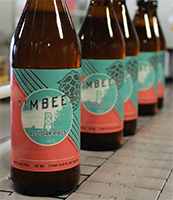 Double Mountain Timbeer!
Double Mountain Timbeer!
5.4% ABV, 35 IBU
A collaboration born of mutual admiration between Double Mountain Brewery and Timber! Outdoor Music Festival, the Hood River, Oregon brewery brewed an “All Day Pale” for the Carnation, Washington music festival July 12-14. Timbeer! will be on tap during the indie rock festival; Peaks and Pints feels fortunate to have a few cases of the easy-drinking pale. Dip your nose into the tropical and pine goodness while listening to Car Seat Headrest on the stage. Sip the piney pale with the long bitter finish as you dance to the Polyrhythmics. More a complete schedule and details, visit timbermusicfest.com.
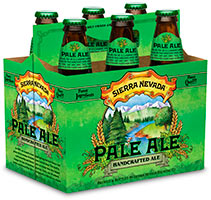 Sierra Nevada Pale Ale
Sierra Nevada Pale Ale
5.6% ABV, 38 IBU
A tip of the cap to the iconic Sierra Nevada Pale Ale that makes all the others in this flight possible. First brewed in 1980, Sierra was the craft that started appearing next to Bud and Miller handles, thus shifting the beer landscape of what people wanted to drink. It was a victory of flavor over, uh, liquid. It has a deep amber color and an exceptionally full-bodied, complex character. Magnum and Perle gives this this craft beer a clean, bitter taste. Generous quantities of premium Cascade hops give the Pale Ale its fragrant bouquet and spicy flavor.
 Deschutes Oh Be Joyful Northwest Pale Ale
Deschutes Oh Be Joyful Northwest Pale Ale
6.1% ABV, 58 IBU
John Harris, Deschutes Brewery‘s very first brewer in 1988, now leads things over at Portland’s Ecliptic Brewing. For Deschutes’ 30th, he contributed to Oh Be Joyful, an easy-drinking summer pale ale with 100 percent Amarillo hops — although it doesn’t smack with hop flavor. It’s lightly hopped with a bread malt background and slight citrus and floral hop flavors with a medium mouthfeel. Solid.
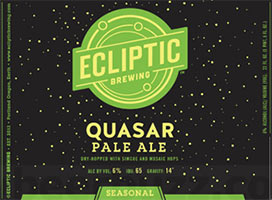 Ecliptic Quasar Pale Ale
Ecliptic Quasar Pale Ale
6% ABV, 65 IBU
Inspired by its luminous namesake, Simcoe and Mosaic hops give Ecliptic Brewing’s Quasar Pale Ale an energetic aroma swirling with green onion, garlic, tangerine and pineapple. The flavor, however, rockets across the tongue with melon and pineapple and leaving very little bitterness behind. With a soft, easy touchdown, Quasar is a stellar beer for enjoying out under the sun.
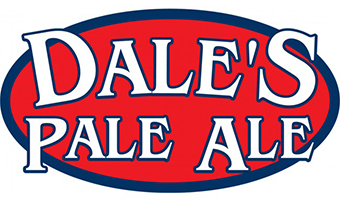 Oskar Blues Dale’s Pale Ale
Oskar Blues Dale’s Pale Ale
6.5% ABV, 65 IBU
Founded by Dale Katechis in 1999, Oskar Blues Brewery began life as a simple brewpub. The people of Lyons, Colorado, visited and drank often, but none of the place’s beers were available anywhere except draft lines in the immediate area. It wasn’t until that fateful day in November 2002 that Katechis decided to package his brews, and then he had a decision to make. Would he invest, as most emerging craft breweries were, in a bottling line and a responsible order of 12-ounce bottles? Or would he go all in on cans, a more expensive option that at the time was the realm of the big brewers and soda producers? Katechis ignored the status quo, and by 2003 the “Canned Beer Apocalypse” had begun. Dale’s Pale Ale, Oskar Blue’s flagship American pale, was the first to hit shelves. Brewed with hefty amounts of European malts, Northern Brewer hops for bittering, Cascade and Columbus hops for flavor, and a big, post-boil addition of Centennial hops for aroma, Dale’s Pale Ale delivers a blast of hop aromas, moderate bitterness, stone fruit flavors, bready malts and a peppery citrus and arugula-like hop finish. A really nice and fresh, hoppy pale ale.
